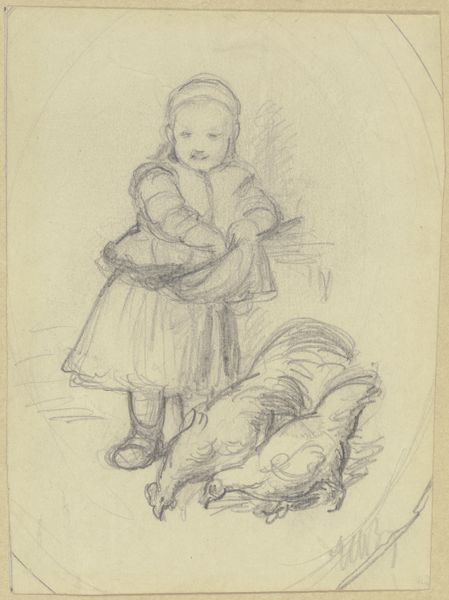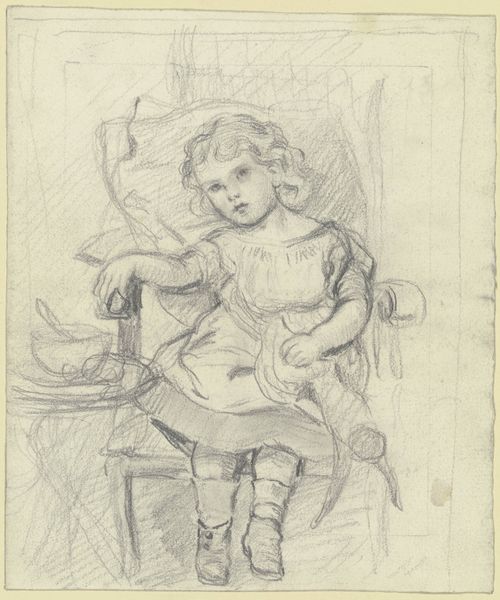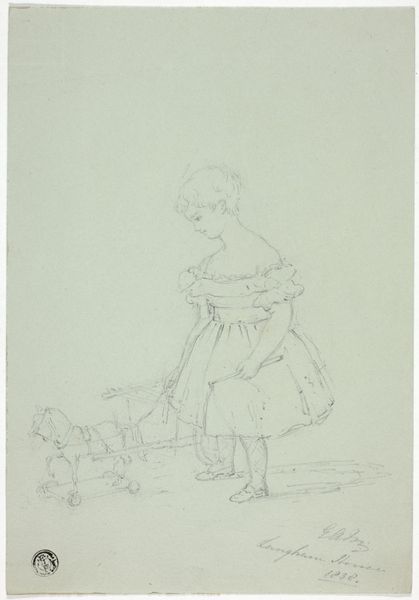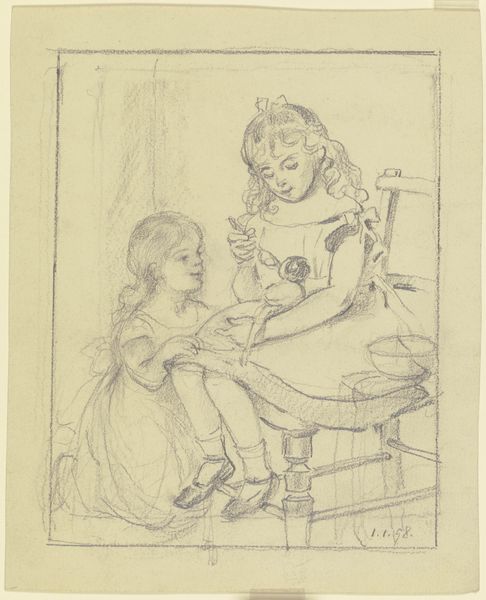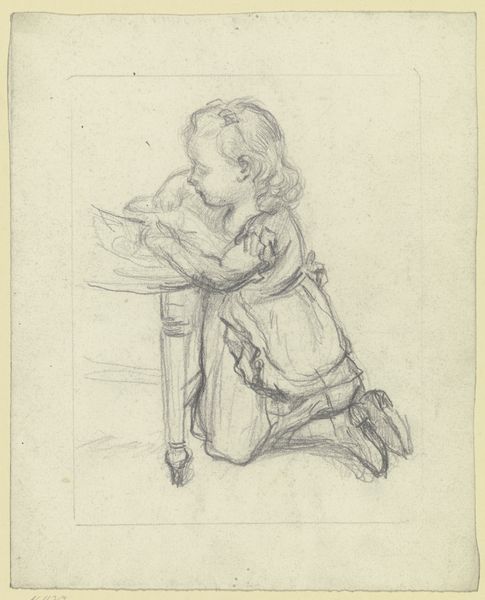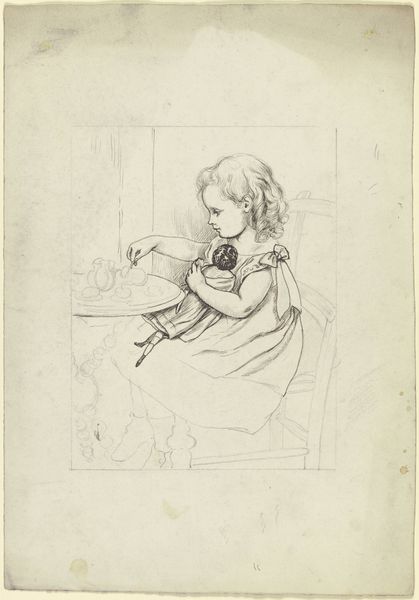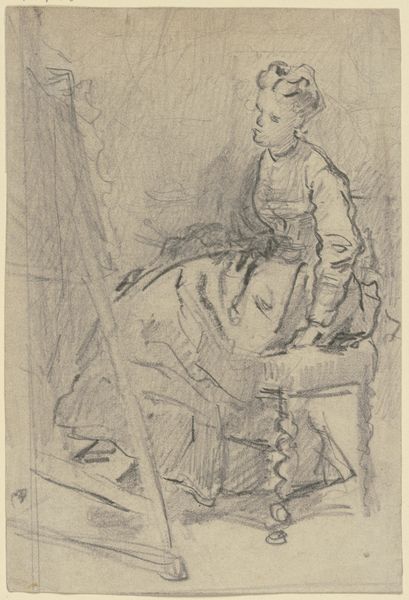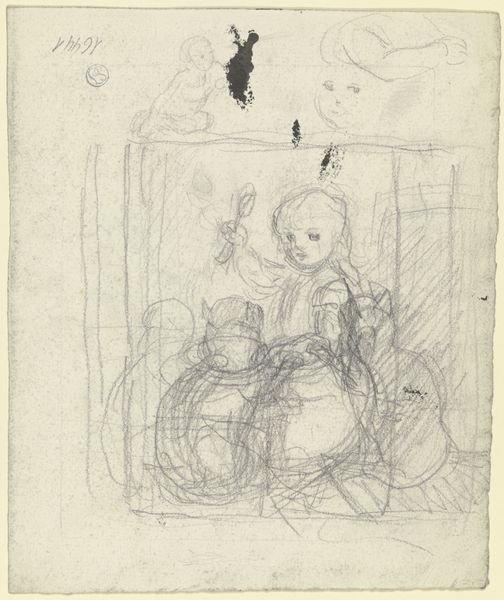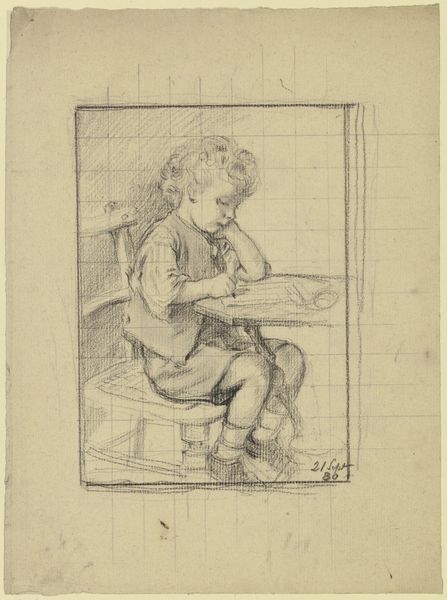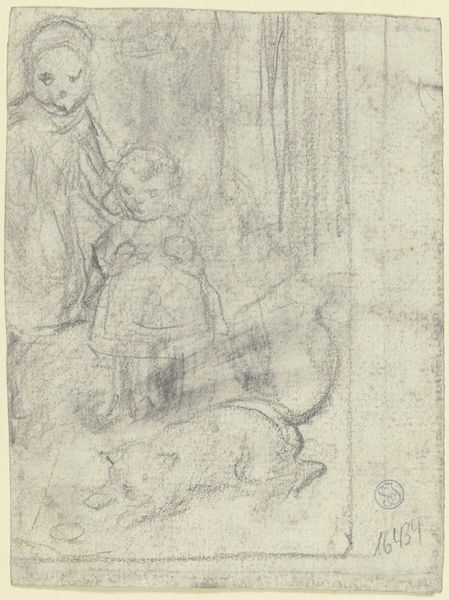
_Suppose your back had got crooked!_ _ Angenommen dein Rücken wäre gekrümmt 1872
0:00
0:00
drawing, paper
#
drawing
#
toned paper
#
light pencil work
#
16_19th-century
#
pen sketch
#
pencil sketch
#
old engraving style
#
paper
#
personal sketchbook
#
german
#
ink drawing experimentation
#
pen-ink sketch
#
sketchbook drawing
#
sketchbook art
Copyright: Public Domain
Editor: Here we have Otto Scholderer’s 1872 drawing, "Suppose your back had got crooked! "Rendered in pencil on paper, the sketch depicts a young girl with a dog. There’s a vulnerability that I find really compelling in the child’s gaze and her slouched posture. How would you interpret its themes, thinking about it from its historical moment? Curator: This drawing is interesting, particularly when we consider the role of childhood and disability in the late 19th century. Representations of children in art often served specific cultural and political purposes. I wonder how the title shapes our viewing experience. Does the explicit mention of a “crooked back” invite viewers to contemplate social anxieties around health and normalcy? Editor: That's insightful! I hadn't considered the title as an active part of the piece. I guess it does challenge that idealised vision of childhood, but why put that vulnerability on display? Curator: Well, consider the emerging fields of medicine and social reform during this period. There was a growing interest in identifying and “correcting” physical ailments, particularly in children. Art became another arena in which ideas about disability and normalcy were negotiated. Scholderer is showing us something both personal and perhaps reflecting broader social concerns about health, the family, and anxieties about what constitutes the ideal body. The grid-like lines could represent constraints and control imposed by society at the time. Do you think this work is critical of these emerging ideas, or just illustrating them? Editor: I see what you mean. It's almost like a snapshot of a larger conversation. Maybe it is not as simple as taking one side, but highlighting it. Thanks, I will definitely need to consider more historical background in understanding art pieces from now on! Curator: And I think, seeing this through your perspective, its strength also lies in how Scholderer does not offer clear answers, making this drawing surprisingly relevant.
Comments
No comments
Be the first to comment and join the conversation on the ultimate creative platform.
